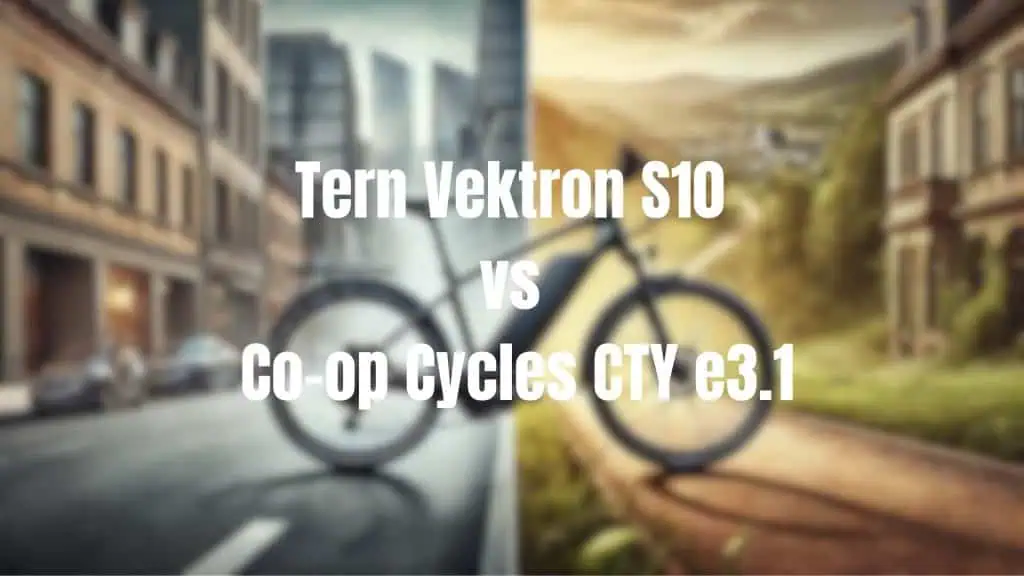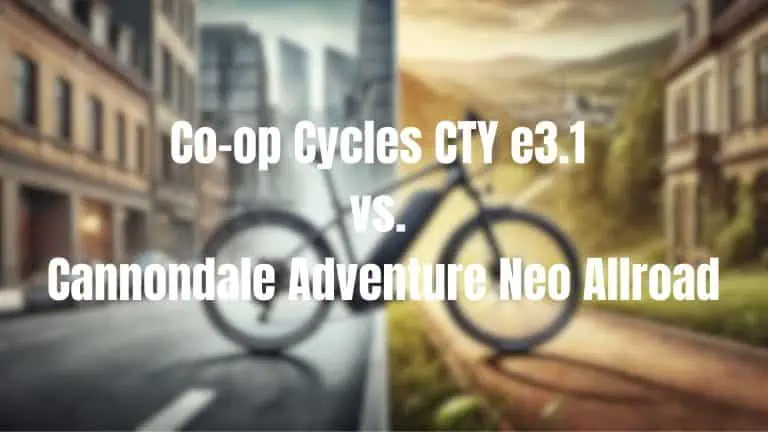Tern Vektron S10 vs Co-op Cycles CTY e3.1: A Comprehensive Comparison

In the diverse world of electric bikes, the Tern Vektron S10 and the Co-op Cycles CTY e3.1 represent two different approaches to e-bike design. While both aim to provide efficient electric-assisted transportation, they cater to different needs and preferences. Let’s compare these two models to help you determine which might be the better fit for your lifestyle.
Comparison Table
| Feature | Tern Vektron S10 | Co-op Cycles CTY e3.1 |
|---|---|---|
| Price | $3,299.00 | $4,059.00 |
| Motor Type | Mid-drive motor | Mid-drive motor |
| Power | 400W | 250W |
| Brakes | Hydraulic disc | Mechanical disc |
| Pedal Assist vs. Throttle | Pedal-assist | Pedal-assist |
| Weight | 48 lbs. 9.6 oz | 60 lbs |
Price and Value
- Tern Vektron S10: $3,299.00
- Co-op Cycles CTY e3.1: $4,059.00
The Co-op Cycles CTY e3.1 is $760 more expensive than the Vektron S10. This price difference is significant, especially considering that the Vektron S10 is already in the premium price range.
Motor Type and Power
- Tern Vektron S10: Mid-drive motor, 400W
- Co-op Cycles CTY e3.1: Mid-drive motor, 250W
Both bikes feature mid-drive motors, which are known for their efficiency and performance, especially on hills. However, the Vektron S10 offers more power with its 400W motor compared to the CTY e3.1’s 250W. This additional power could be beneficial for riders tackling steep hills or those who prefer more assist.
Brakes
- Tern Vektron S10: Hydraulic disc
- Co-op Cycles CTY e3.1: Mechanical disc
The Vektron S10 features hydraulic disc brakes, which generally offer superior stopping power and better performance in wet conditions. The Co-op Cycles CTY e3.1 uses mechanical disc brakes, which are still effective but may require more frequent adjustment and might not provide quite the same level of modulation as hydraulic systems.
Pedal Assist vs. Throttle
Both bikes use pedal-assist systems, meaning they provide power only when you’re pedaling. This creates a more natural riding experience and can help extend battery life compared to throttle-only systems.
Weight
- Vektron S10: 48 lbs. 9.6 oz
- Co-op Cycles CTY e3.1: 60 lbs
The Vektron S10 is significantly lighter, weighing about 11.5 pounds less than the Co-op Cycles CTY e3.1. This weight difference could be noticeable when handling the bike off-road, carrying it up stairs, or during longer rides.
Additional Considerations
- Folding Capability: The standout feature of the Vektron S10 is its ability to fold into a compact size. This makes it incredibly portable and easy to store, which could be a game-changer for urban dwellers with limited space or those who need to combine cycling with public transport. The Co-op Cycles CTY e3.1 does not fold.
- Brand and Support: The Vektron S10 is made by Tern, a company known for its expertise in folding bikes. Co-op Cycles is REI’s house brand, which comes with the backing of REI’s customer service and their excellent return policy.
- Intended Use: While both bikes are suitable for urban riding, the Vektron S10’s folding capability makes it more versatile for multi-modal commuting. The CTY e3.1, being a standard e-bike, might be more comfortable for longer rides.
Which is Better?
The choice between these two e-bikes depends heavily on your specific needs and lifestyle:
- Portability: If you need a bike that can be easily stored in small spaces or carried onto public transport, the Vektron S10 is the clear winner.
- Power: The Vektron S10 offers more power, which could be beneficial for hilly terrain or riders wanting more assistance.
- Weight: The Vektron S10 is significantly lighter, making it easier to handle off the bike.
- Braking Performance: The Vektron S10 has an edge with its hydraulic disc brakes.
- Price: Despite being a premium folding e-bike, the Vektron S10 is less expensive than the CTY e3.1.
- Brand Support: If you value REI’s customer service and return policy, the Co-op Cycles CTY e3.1 might be more appealing.
In conclusion, the Vektron S10 offers a unique combination of portability, power, and performance, making it ideal for urban dwellers who need a versatile, compact e-bike. It’s particularly suited for those who need to combine cycling with other forms of transportation or have limited storage space.
The Co-op Cycles CTY e3.1, while more expensive and heavier, might appeal to those who prioritize the backing of a well-known retailer like REI and prefer a standard e-bike format for longer rides.
Consider your daily commute, storage situation, and riding preferences when making your decision. Both bikes offer quality rides but cater to different needs in the e-bike market.






